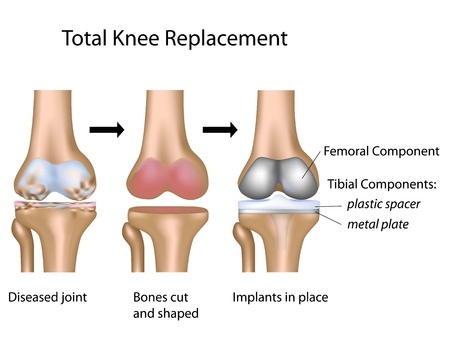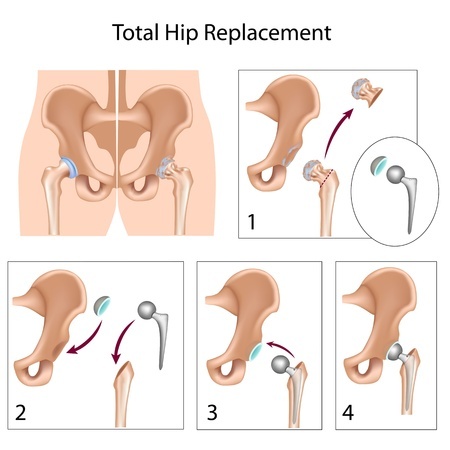|
Total Joint Replacement
Knee
 You use your knee every time you take a step. Because of this, living with a worn or injured knee joint can be painful and
frustrating. In many cases, an orthopedic surgeon can replace all or part of the damaged knee joint. Dr. Fox utilizes the most advanced techniques
in joint replacement therapy, providing patients with a natural fitting and feeling corrective solution. You use your knee every time you take a step. Because of this, living with a worn or injured knee joint can be painful and
frustrating. In many cases, an orthopedic surgeon can replace all or part of the damaged knee joint. Dr. Fox utilizes the most advanced techniques
in joint replacement therapy, providing patients with a natural fitting and feeling corrective solution.
Measuring Your Knee- The first step is a magnetic resonance imaging (MRI) exam, which allows for the precise measuring of your knee and its components. A three-dimensional model of your natural knee will be created, allowing for as a close to an exact replication as possible.
The virtual joint image is in turn used to determine the appropriate size and placement of the implant to be used in your
upcoming knee replacement surgery. In combination, the image, sizing specifications, and placement guidelines are applied for the creation of a set
of customized cutting guides to be used during your operation.
Surgery and Implant Process - At the start of the implant procedure, your surgeon will pin the cutting guides in place within the treatment area. In accordance with the computer-calculated guide slots, precise cuts will be made to the bone, laying the groundwork for successful prosthesis placement. In most cases, the cuts have been pre-calculated within factions of a millimeter, allowing for the most exact schematics possible. Upon completion of the
cutting phase, a trial implant will be used for the testing and selection of appropriately sized tibial inserts. Once proper fit and balance are confirmed,
the official knee implant will be positioned and adhered using bone cement.
This computer-based process allows for each knee to be appropriately aligned, providing unique support to the specific recipient.
This precision allows for the most natural feel and performance possible, increasing patient comfort and overall procedure satisfaction. In addition,
recipients of custom fit knee replacements also report faster recovery times, as the level of pre-op detail allows for less invasive operations and more
predictable results.
Post-Op Recovery - While custom fit knee replacements provide for a faster than average recovery time, patients should still take precaution, especially during the days immediately following surgery. Your surgeon will likely prescribe a combination of antibiotic and physical therapies, both
preventing short-term infection and enabling long-term recovery.
 Hip Hip
Living with a worn or injured hip joint can be painful and frustrating. Hip replacement is often indicated for patients suffering from severe osteoarthritis that causes chronic pain, immobility and instability. You may find yourself doing less and less. In many cases, Dr. Fox can replace your problem hip joint.
Surgical Process - During a hip replacement procedure, the surgeon will remove the top of the femur and cap
it with a new ball component. A rod inserted into the femoral neck supports the new cap. Next, the surgeon clears the socket component of the hip joint by
scraping the surface to remove any damaged bone and cartilage. On the newly prepared surface, the surgeon places a new socket component. Once the components
of the new joint are set in place, the replacement hip should feel and move like a natural joint.
Post-Op Recovery - Until it is fully healed, an artificial hip has a limited safe range of motion.
After your surgery, you will be shown how to move in ways that protect your new hip, including moving slowly, sitting in chairs with high, firm seats, with your
hips above your knees, not bending over too far. A total hip replacement is major surgery, so don't be surprised if it takes a few months before you feel
really good.
Home | About Dr. Fox | Accolades | Athletes | News
Knees | Back & Neck | Shoulder & Collarbone | Hand & Wrist | Foot & Ankle | Total Joint Replacements | Sports Medicine/Athletic Injuries | Pain Management | Nerve Injuries | Joint Injections
|

